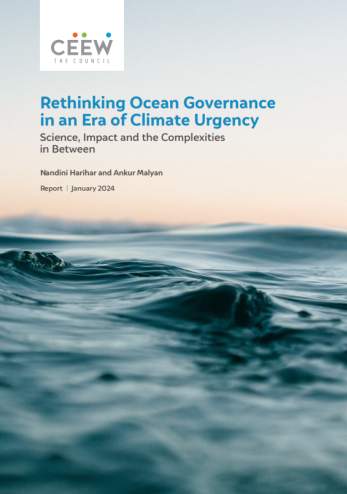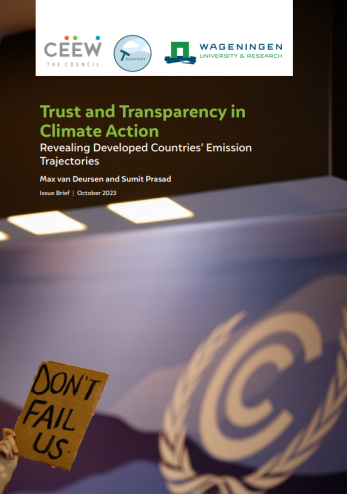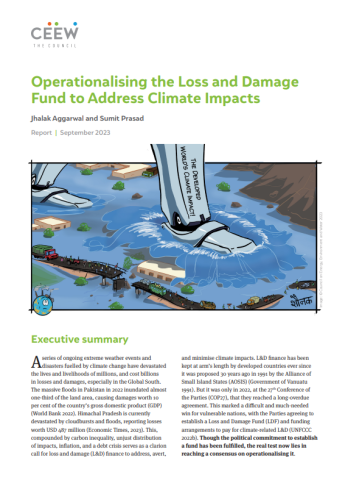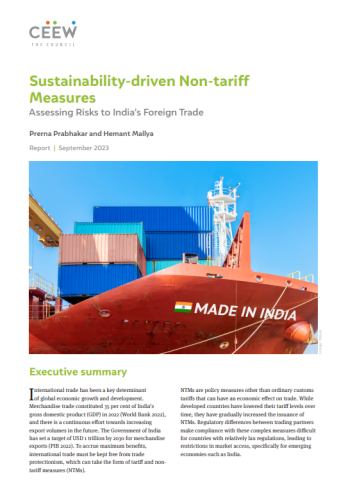Report
Harnessing the Power Shift
Governance Options for International Climate Financing
Arunabha Ghosh
October 2010 | International Cooperation, Sustainable Finance
Suggested Citation: Ghosh, Arunabha. 2010. Harnessing the Power Shift: Governance options for International Climate Financing. Oxford: Oxfam International.
Overview
This paper examines how different governance priorities would affect the institutional arrangement for a credible financing mechanism in the climate regime. It sets out the context for the debates on climate finance. It outlines the demands of scale, additionality, adaptation, mitigation, and technology development. It then explores how the economic crisis has put pressure on climate finance. Further, it presents a common framework to assess governance. It identifies six different funding channels to highlight how their governance is often interlinked. It analyses the competing priorities of different stakeholders. The report also draws on lessons from financing mechanisms in other regimes before presenting four options for institutional design of a climate financing mechanism.
Key Highlights
- The economic crisis has put pressure on fiscal balances and has also undermined the viability of carbon markets to attract and sustain investments in cleaner technologies.
- Large developing countries are posting the fastest rates of growth in clean energy investments, whether measured by installed capacity or by the support offered unilaterally.
- Developing countries are now a force to reckon with in climate negotiations. While they remain wedded to the G77 (the grouping of 130 developing countries), the BASIC (Brazil, South Africa, India, China) countries are now at the top table.
- Growing attention is being paid to innovative financing schemes to increase the scale of funding available and to attract investors.
- The six different funding channels – multilateral development bank-led, UN-led, government-promoted, public-private, carbon markets, and unilateral support – to highlight how their governance is often interlinked have been identified.
- The analysis forms the basis of a governance framework focused on four functions: making decisions, securing commitments, ensuring disbursements, and monitoring performance.
- Thirty-three climate funds have been analysed along with each function and with regard to several embedded criteria.
- Formal representation does not guarantee effective voice in decision-making; funding commitments have been very low and unpredictable; resource allocation has been worse and directed to a subset of countries; and there is little standardised monitoring, evaluation, or review of financial flows.
- It is unlikely that a single finance mechanism would meet all governance criteria in ways that will satisfy all parties and stakeholders.
- It is estimated that the price of emissions permits will need to rise to $50 per tonne by 2020 ($110 by 2030) in rich nations and to $30 by 2020 (and $50 by 2030) in poor countries.
Key Recommendations
- Create more voice or decision-making power for beneficiary countries and coordinate among existing institutions.
- Make attempts to provide more programmatic and budget support rather than focusing only on projects. This will reduce transaction costs for contributing countries and increase the voice of beneficiaries.
- Create detailed metrics and verification procedures to compare current emission pathways with lower-carbon pathways, with the low carbon global fund (LCGF) financing the costs of transition.
- Increase the scale of funding to ensure that climate financing is adequate for the purpose. Also, the other priority is to reduce administrative barriers to increasing the flow of resources.
- Ensure that leading countries do not exit the playing field entirely, leaving the smaller players with neither money nor technology. Instead, different design options can offer some gains to all parties.
The existing mechanisms have failed to deliver the level of funding required for the task, even as developing countries have clearly expressed dissatisfaction with the governance of climate finance.







